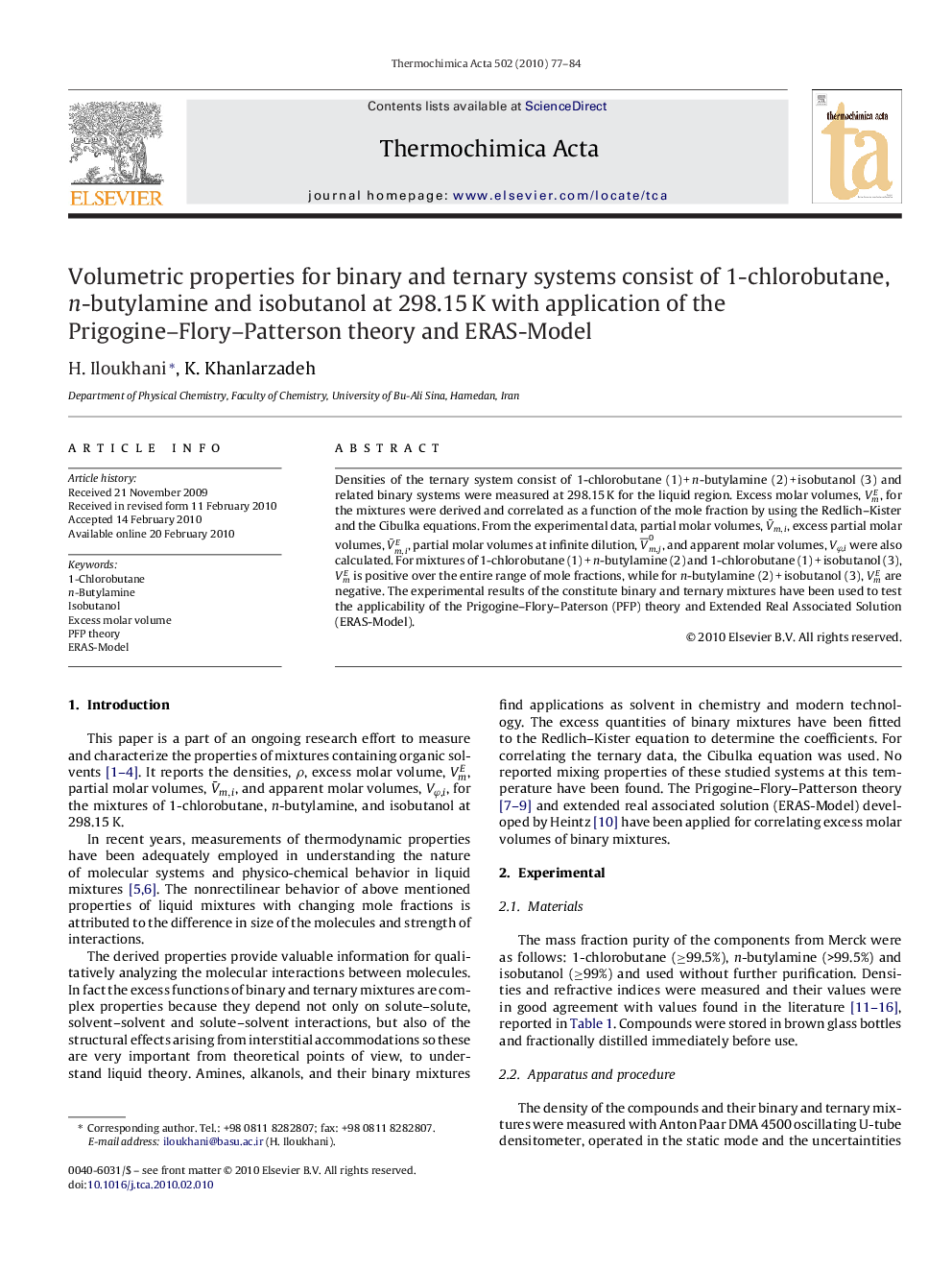| Article ID | Journal | Published Year | Pages | File Type |
|---|---|---|---|---|
| 674828 | Thermochimica Acta | 2010 | 8 Pages |
Densities of the ternary system consist of 1-chlorobutane (1) + n-butylamine (2) + isobutanol (3) and related binary systems were measured at 298.15 K for the liquid region. Excess molar volumes, VmE, for the mixtures were derived and correlated as a function of the mole fraction by using the Redlich–Kister and the Cibulka equations. From the experimental data, partial molar volumes, V¯m,i, excess partial molar volumes, V¯m,iE, partial molar volumes at infinite dilution, V¯m,j0, and apparent molar volumes, Vφ,i were also calculated. For mixtures of 1-chlorobutane (1) + n-butylamine (2) and 1-chlorobutane (1) + isobutanol (3), VmE is positive over the entire range of mole fractions, while for n-butylamine (2) + isobutanol (3), VmE are negative. The experimental results of the constitute binary and ternary mixtures have been used to test the applicability of the Prigogine–Flory–Paterson (PFP) theory and Extended Real Associated Solution (ERAS-Model).
